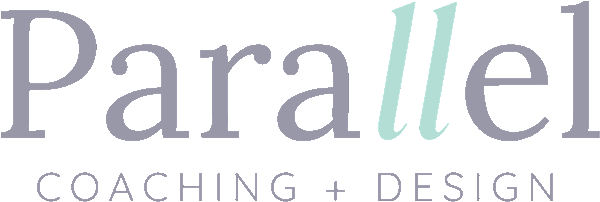Reflective Opportunities You’re Leaving on the Table
Reflective practice has massive implications for businesses. So why doesn’t it play a more prominent role in our professional lives?
Norms around corporate professionalism tell us to check all the boxes on our to-do list and run the fastest towards the finish line. It’s not always about the quality of our products/outcomes but the quantity of our outputs that makes for a successful venture. With that thinking, there’s almost no time for the nuance that reflective conversations offer. In fact, reflection can be seen as a nuisance barrier to getting work done.
The reality is, we need time to reflect because we are thinking and feeling human beings. Try as we might, we can’t shut our brains off for 8+ hours a day to mindlessly engage our work and expect to consistently achieve our desired impact. Not sustainably, at least. Maybe if you find yourself owning Walmart or Amazon you can get away with operating your business like that, but chances are most leaders in business are not running multi-billion dollar global enterprises with those types of liberties. For the rest of us normals, we have to be mindful of the capacity of our human workforce and the real human needs that can make or break our businesses.
One of those human needs of our workforce is reflection. Reflective practice allows people to cultivate meaning around the work that they do as well as the sense of purpose that drives their connection to the work. Sure we have meetings that function as spaces for connecting and getting things done with our teams, but how meaningful are half of the meetings you attend each week? Folks spend a lot of time in meeting spaces talking to hear themselves talk. Competing to have the loudest voice. Passively reporting out. Performing smartness and competence. What is glaringly missing, and what I believe people are hungry for, is meaningful dialogue about the work and its impact (on us, our communities, our target audience, etc.). We are leaving a great opportunity on the table. Not only to bring a shared awareness and ownership of the mission, but to bring forth new and innovative ideas that could help us solve our diverse, perpetual set of problems.
So what are some reflective opportunities that leaders are leaving on the table? Here are 4 conversations that can help to enhance your organization’s reflective capacity and set your team on a path towards more robust creative thinking and innovative problem solving.
The Retrospective
Naturally, at the end of a project or an iteration of work (i.e., a given timeline to complete tasks), you take stock of the actions completed and the items left on your to-do list. Sometimes after we embark on such a review, we head right back into planning, restarting the strategic cycle. Unfortunately, this pattern leaves out a critical reflective component of your strategic process: the retrospective. A retrospective conversation is one in which you analyze the work that has been done and the experience of carrying out the work. It’s more than a conversation about what items you crossed off your to-do list, it’s a discussion on what we think about our effort and the takeaways that are important to our next steps. Analysis people! It’s really easy to get lost in our strategic plan when we try to iterate and scaffold our actions without reflecting on the lessons learned and things we need to know before moving on. We arrived at this place somehow: Is it possible that our experience can help us scale up or avoid future mistakes? Are there barriers that we are aware of now that we can anticipate in our next iteration? We can’t ever really know the answers to those questions without a well-rounded retrospective examination of our work.
Questions that can help drive a quality retrospective discussion include:
What did we just accomplish?
What were we unable to accomplish?
Did we reach our target?
What did we like about our experience?
What didn’t we like about the process?
What are the implications of our work? What impact did we have?
What was missing that we needed?
In a perfect world, what did we wish we had?
What did we learn?
What barriers did we run into?
What wisdom are we carrying into our future actions?
The Needs Assessment
In any strategic effort, it’s important to know what you need. It’s not an exercise in making sure you get everything that you or your team requires or would like to have. It is, however, an opportunity to take stock of what is important. It gives you a fighting chance to contextualize the elements that can help or hinder your effort and prioritize action towards responding to those elements. In addition, we tend to think about the things our operations need, but the conversation should also extend to our workforce: what our people need. People need a number of things to help them do their best work, like a collaborative and trusting environment, knowledge and expertise, clear communication, psychologically safe and supportive motivation. Without a pulse on the multidimensional needs that exist on your team, you as a leader will struggle to facilitate and influence performance in ways that lead to the desired outcomes you seek.
Questions to help guide a well-rounded needs assessment include:
What do we need to accomplish?
What do we need in order to reach our desired outcomes?
What do we need in order to function/improve our function as a team?
What do people need in order to be effective team members?
What do we need in order to do our best as a collective?
What do we need to know or learn more about?
What do we need in order to prevent burnout?
What do we need in order to streamline our communication?
What do we need in order to get organized?
The Vision Plan
The things we want can often differ from the things we need. Vision planning gives us the space to speak to the things we want and long for, and it allows us to sharpen our creative edge around what is possible. Innovation is at the crux of this type of reflection. We don’t know what is possible unless we give ourselves a chance to imagine, ideate, and dream big. Unfortunately, this type of thinking conflicts with many workplace cultures and professional norms. Engaging our imagination can be, well, enjoyable. Dare I say…“fun?” Gasp! The problem for some people is that vision planning and imagining doesn’t always feel like work, thus the practice is written off immediately as a frivolous use of time. In the today of things, we can’t afford not to do more activities that spark feelings of joy in our employees because…burnout. Why not take the opportunity to create spaces that are productive and engaging? What’s stopping your organization from creating protected space for your staff to become inspired, indulge creativity, and share their vision for the future in community with each other?
Some questions to guide your next vision planning session include:
What opportunities do we want to explore?
What do we want to accomplish?
What do we want to understand or learn more about?
What does an alternative reality look like?
Who are our dream partners, collaborators?
What do we want our experience to be like?
What does success look and feel like? What are the features of our successful reality?
How do we want to go about doing X differently?
Imagine your ideal program, team, workplace, etc. What are the components? How does it work?
The Strategic Plan
We are all pretty familiar with the ritual of strategic planning, but do we always know the right questions to ask to make sure we are all on board, confident, and ready for what’s to come? It’s not enough to have a rough sketch of our goals and objectives towards reaching them. In order to see results and stay on mission, it’s important that your team reflects on an array of dimensions that help to give your plan life and a chance to drive success. Again, we’re speaking to the human element of the plan. Sure we are addressing our to-dos on a technical level, but what about concerns? Barriers? Capacity? How people perceive the plan and their place in it is important. You can’t possibly plan for everything, but taking the time to reflect on these diverse elements helps to ensure your team’s readiness to the best of your ability.
Some questions for developing a robust strategic plan include:
What do we need to do?
What do we have the capacity to do?
What are we ready to take on now? In the next 3 months? 6 months? Etc.
What is the timeline for completing open actions?
Who is responsible for what?
Are these tasks relevant? Are these actions on-mission?
What barriers can we anticipate?
How do we feel about the plan? Is there consensus?
Is this plan realistic? Do we have the capacity to carry out this plan? Should we modify it?
What are we looking forward to?
What are we apprehensive about?
Revisit questions from your vision plan: What does success look and feel like? What are the features of our successful reality?
Taking baby steps to embed more reflection into your standard operating procedures will eventually help to develop a culture that respects and welcomes feedback and creative thought. Give your team the permission and support they need to bring their perspectives to the table, and I guarantee you’ll see a shift in the overall quality of your (team)work for the absolute better.
Want to learn more about building reflective practices into your organization?
Let’s connect!

